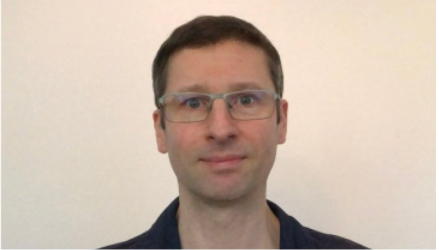Dirac medal for NITheCS SAB member
Prof Frans Pretorius, a member of NITheCS’ Scientific Advisory Board (SAB), is one of the four recipients of the 2021 Dirac Medal.

Professor Frans Pretorius, one of the four recipients of the 2021 Dirac Medal awarded by the International Centre for Theoretical Physics (ICTP) is also a member of the Scientific Advisory Board (SAB) of the National Institute for Theoretical and Computational Sciences (NITheCS). The medal was first awarded in 1985 in honour of the prominent 20th Century physicist Paul Dirac, and is now awarded annually on Dirac’s birthday (8 August) to scientists who have made significant contributions to theoretical physics. Prof Pretorius is attached to Princeton University in the United States of America. The other three physicists who received the Dirac Medal with Prof Pretorius for their theoretical work underpinning the 2015 detection of gravitational waves generated by black holes are Profs Alessandra Buonanno (Max Planck Institute for Gravitational Physics, Germany), Thibault Damour (Institut des Hautes Études Scientifiques, France) and Saul Teukolsky (Caltech and Cornell University, USA).
‘It is a great honour to be a co-recipient of the 2021 Dirac Medal. This year’s medal was to recognise the theoretical work that allowed for the prediction of the gravitational wave emission that occurs when two black holes collide,’ commented Prof Pretorius. He explains further: ‘This is crucial for interpreting the gravitational wave signals that the Laser Interferometer Gravitational-Wave Observatory (LIGO) and Virgo detectors have been observing since 2015, allowing us to both test the predictions of Einstein’s theory for such cataclysmic events, and to learn more about the population of black holes in the universe. So far, the data is consistent with Einstein’s Theory of General Relativity, though these are still early days in the era of gravitational wave astronomy. I am excited to see what surprises might be in store for us as the experimentalists continue to improve the sensitivity of the instruments.’
The Acting Director of NITheCS, Prof Francesco Petruccione, expressed delight at the news. ‘This underlines the value, among others, of having members of our SAB around the globe who work on cutting-edge science. We are proud to be associated with Prof Pretorius and will continue to closely follow the work that he and his colleagues are doing on the topic.’ In the ICTP announcement of the 2021 Dirac award, ICTP cosmologist Paolo Creminelli noted that gravitational waves carry information on the motions of objects in the Universe. Because the waves could also be used as tools to explore how black holes are formed or to study the features of neutron stars, the work is ‘opening a whole new view of the Universe much as Galileo’s telescopes did’. Today’s instruments used to detect the gravitational wave signals also demonstrate the importance of international collaboration. Although LIGO’s interferometers located in the states of Washington and Louisiana in the United States are separated by 3002 km, their detectors collect data simultaneously, and thus they operate as one single observatory. More than 80 scientific institutions world-wide are members of the LIGO Scientific Collaboration. The Virgo gravitational wave detector is hosted by the European Gravitational Observatory (EGO) at Cascina near Pisa, in Italy and the 650 members of the Virgo Collaboration represent 119 institutions in 14 countries.
Among previous recognition of his work, Prof Pretorius was awarded the 2017 New Horizons in Physics Prize by the University of Princeton ‘for creating the first computer code capable of simulating the inspiral and merger of binary black holes, thereby laying crucial foundations for interpreting the recent observations of gravitational waves; and for opening new directions in numerical relativity’. At the time he noted that he was grateful for ‘living in a society that encourages and supports the pursuit of knowledge, even in fields as esoteric as my own.’ ‘The work done by the 2021 Dirac recipients clearly illustrates the importance of a close link between theoretical physics and computational science—the very reason why the NITheCS has an important place at the forefront of developments that make scientific endeavour so important for sustainable development locally and globally,’ Prof Petruccione adds.
The Institute for Advanced Study has a video on Prof Pretorius’ work here
